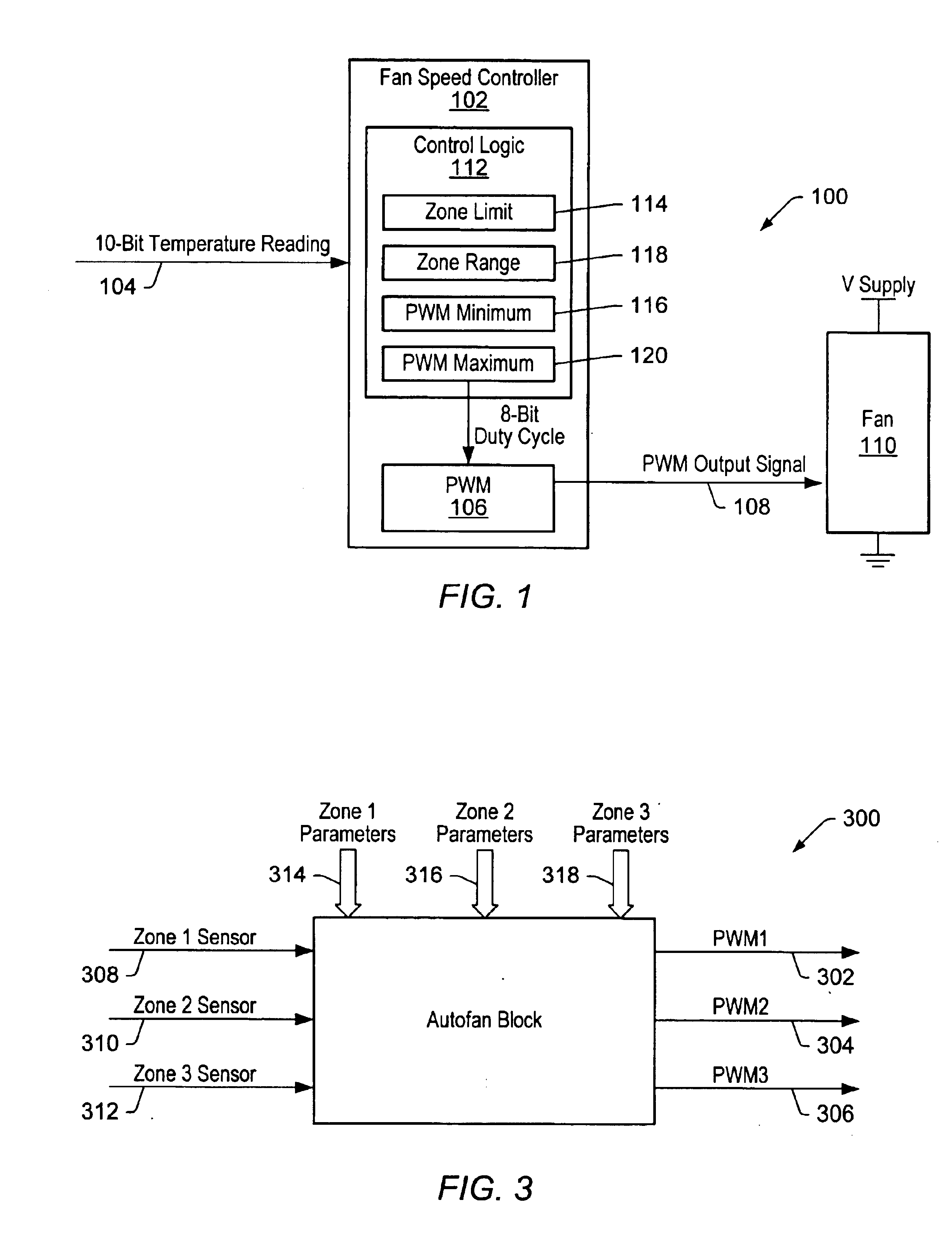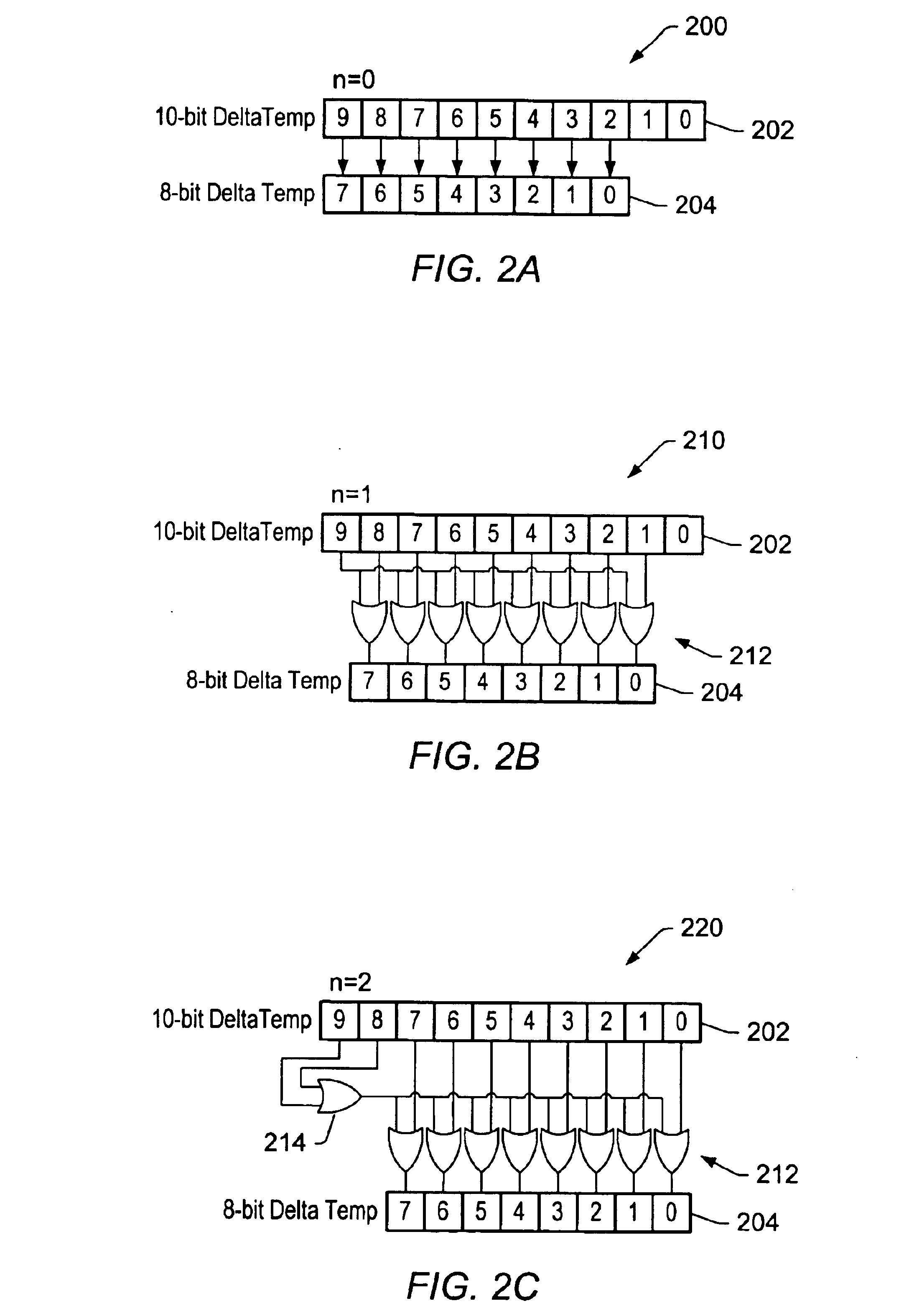Fan control system with improved temperature resolution
a control system and temperature resolution technology, applied in the direction of dynamo-electric converter control, domestic cooling apparatus, instruments, etc., can solve the problem of limiting fine adjustments of pwm signals, bursting of fan speed that produces loud and annoying noises, and the need for complex management schemes in the management of fan operation
- Summary
- Abstract
- Description
- Claims
- Application Information
AI Technical Summary
Benefits of technology
Problems solved by technology
Method used
Image
Examples
Embodiment Construction
Fan speed control systems often control a fan with a PWM (pulse width modulated) signal generated by a PWM signal generator. The signal generator receives PWM signal parameters for calculation of the PWM signal at a particular time. One of the PWM signal parameters is “duty cycle.” The duty cycle of a PWM signal is the ratio of the amount of time that the PWM signal is asserted to being non-asserted. For example, a PWM signal having a 50% duty cycle is understood to be a PWM signal asserted half the time. The greater the PWM duty cycle, the faster the fan operates, and thus, the greater the air movement is in the fan speed control system. For example, a 100% duty cycle produces a PWM signal that powers the fan at a maximum, whereas a 0% duty cycle produces a PWM signal that turns the fan off.
The duty cycle is calculated, in part, from a temperature difference value referred to herein as the “DeltaTemp.” The DeltaTemp value is calculated in various manners depending on the fan speed ...
PUM
 Login to View More
Login to View More Abstract
Description
Claims
Application Information
 Login to View More
Login to View More - R&D
- Intellectual Property
- Life Sciences
- Materials
- Tech Scout
- Unparalleled Data Quality
- Higher Quality Content
- 60% Fewer Hallucinations
Browse by: Latest US Patents, China's latest patents, Technical Efficacy Thesaurus, Application Domain, Technology Topic, Popular Technical Reports.
© 2025 PatSnap. All rights reserved.Legal|Privacy policy|Modern Slavery Act Transparency Statement|Sitemap|About US| Contact US: help@patsnap.com



